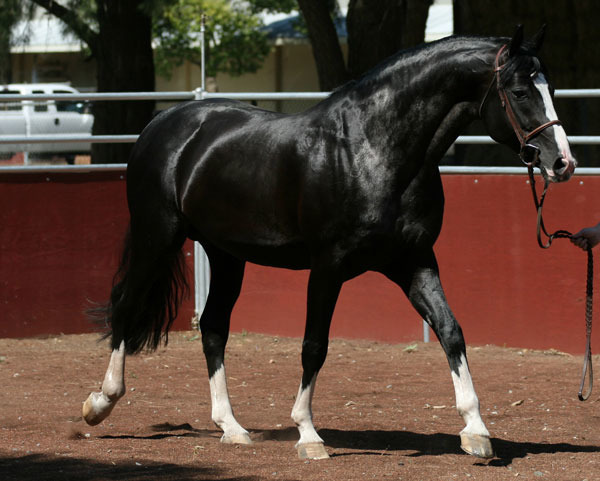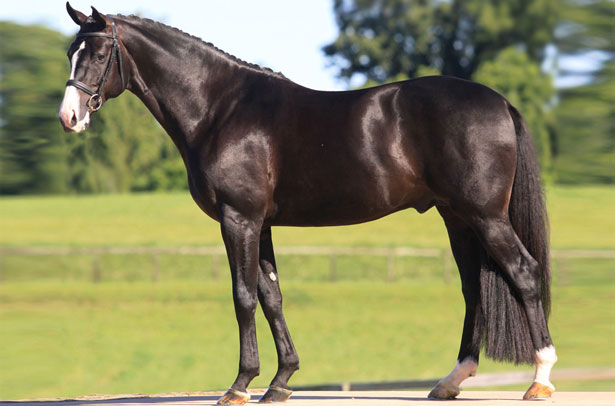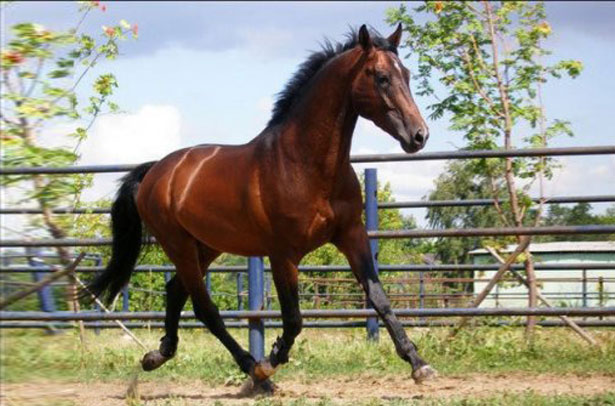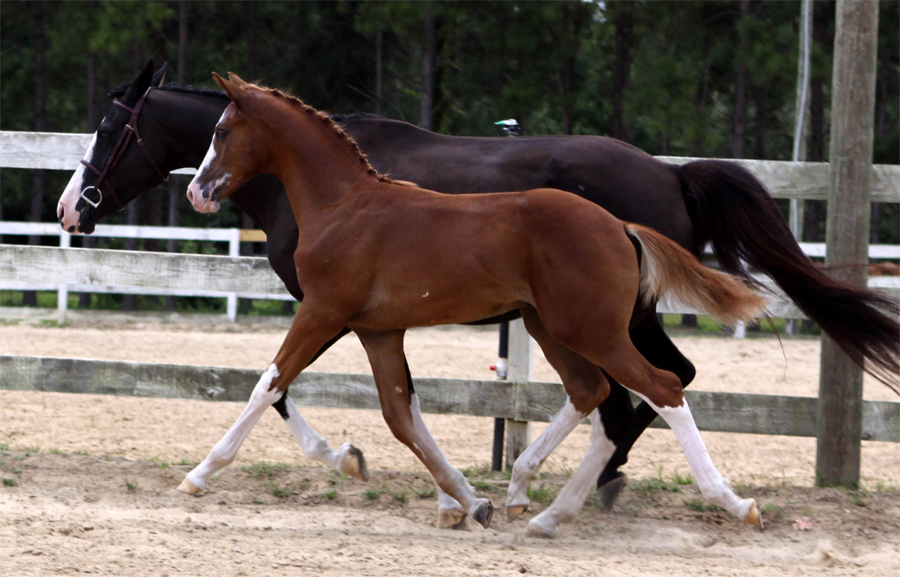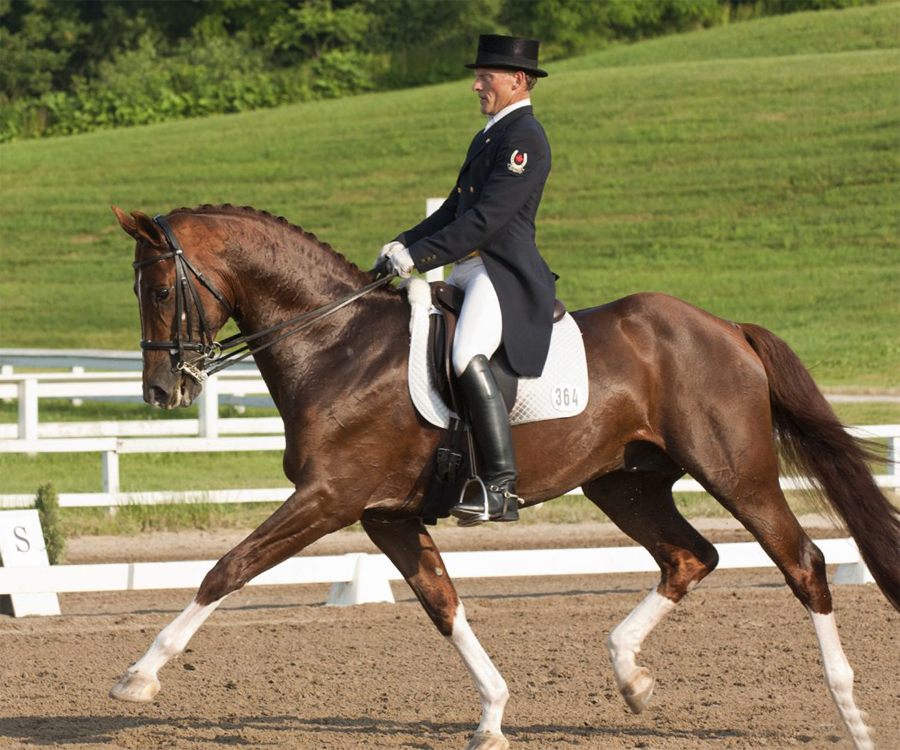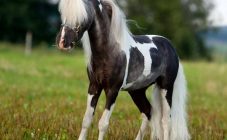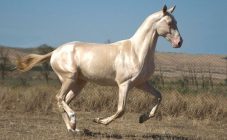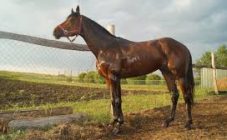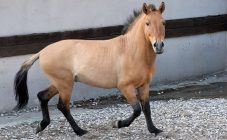Content:
Today the Hanoverian horse is considered one of the leaders in sports competitions. According to some reports, this is the most popular breed in Europe. In the world it is recognized by the famous brand, which looks like the Latin letter "H". The breed was officially founded by Prince George II of England in 1735.
The Hanoverian horse breed was bred for almost three centuries by crossing local Germanic breeds with Arab and riding horses, as a result of which the scrupulous Germans achieved what they wanted - today these graceful animals are one of the most common in equestrian sports, they are equally effective in show jumping and on the road.
History of the Hanoverians
The history of the breed began in the 8th century - the first mention appeared in the annals of the Battle of Poitiers. At that time, these were heavy horses used in battles. Horses probably originated as a result of crossing various Hanoverian breeds with stallions brought from Spain and the East. This type of horse was popular for almost a century, as it was able to carry a knight in heavy uniform.
However, everything changed with the accession to the throne of George I, the first representative of the Hanoverian dynasty on the royal throne of Great Britain. The German monarch spent most of his time on the European continent, paying great attention to horses. Having visited England in Hanover, the horse returned completely different.
The breed began to receive increased attention. The monarch and his generals wanted her to become faster and dexterous, as the army badly needed horses that could quickly overcome long distances and react with lightning speed on the battlefield. From that moment on, purebred stallions were crossed with ordinary Hanoverian mares, thereby improving the breed and taking it to a new level.
In 1735, a stud farm was built in Celle, where purebred Hanoverians were bred, crossing local mares with Arabian horses. Here the owners bred heavy horses for the needs of agriculture and the movement of carriages.
After the end of World War II, the breed underwent significant changes - it finally ceased to be agricultural and heavy. The Germans decided to rely on sports results, so work in the selection of Hanover began in this direction. Horses were mixed with Arab and English riding, and as a result, a breed was bred that has retained its appearance to this day - purebred, lightweight, capable of withstanding competition in a variety of equestrian sports.
Characteristics of the breed
Due to their endurance and tenacious character, Hanoverians often show brilliant results in various types of sports competitions. The approximate distribution of their participation in different types of races from the total number of horses looks like this:
- in show jumping they are used most often - about 60%;
- dressage is about 30%;
- 10% are involved in triathlon.
Horses are distinguished by a stable disposition, since only calm animals are allowed for selection. They are hardy, level-headed and sensitive.This horse is easy to control, as they are easy to train and make good contact.
Description of the breed
Horses are distinguished by a noble exterior, outwardly reminiscent of purebred English horses. In all their movements gracefulness and dexterity can be seen. These are very beautiful animals. A medium-sized head with intelligent, expressive eyes, a long, harmonious neck and a well-visible withers. The body of the horses is strong, the legs are muscular, long and proportional. Well-set tail. The height of the horse reaches 1.65 - 1.75 m.
Suits are very diverse, but one-color: black, gray, chestnut, red, white spots are often found. But the most common flowers are black, dark bay and bay.
Care and maintenance
Horses are kept in special stables, which can be rented or built independently. The latter option is more preferable, since renting a place in a stable is not a cheap pleasure, while building your own stable will be much cheaper in the future.
A horse stable should consist of the following premises:
- fenced-off places for horses, where they will spend the night and be kept in the cold season;
- the room where the ammunition will be stored;
- bathroom;
- stock;
- living quarters.
In this case, it is necessary to take into account the place for a boiler or other heating unit, which will definitely be needed in the cold season. A reliable ventilation system is also important.
The flooring, like the stable itself, is preferable to be made of wood, since the brick damp, which can lead to discomfort for the horses. The litter can be from simple sawdust, the main thing is to clean the room on time and add fresh ones. In this case, the size of the sawdust must be taken into account - they should not be too small, as this is fraught with a large amount of dust that will clog into the animal's nostrils. The temperature regime should be approximately the same, despite the weather conditions - from 15 ° С to 20 ° С.
Change the litter at least once every six weeks. In this case, the room should be completely disinfected.
The diet
When grazing more than 80% of the horses' feed is grass, but in cold weather you need to take care of their diet.
The food includes hay, which is divided into several types by its structure:
- steppe;
- meadow;
- legume;
- cereal.
Grain hay is most suitable. If you include legumes in the diet, then in no case should it be given in its pure form. It is best to mix with cereal.
Grains (oats, barley, rye, wheat), corn, millet, and legumes should also be included in the diet if the horse is working hard. In addition, bran, premixes and salt should be included in the diet. Also, you should not neglect vegetables and fruits with a calculation of no more than 4 kg per 100 kg of animal weight.
The example of the Hanoverians can be judged by the famous "German quality", since the Germans remained true to themselves in breeding the breed - they managed to reach incredible heights in breeding, which led to the emergence of such a noble, hardy and easy-to-train animal. However, even it took them several centuries to make the real leaders of equestrian sports out of the heavyweight breed.

